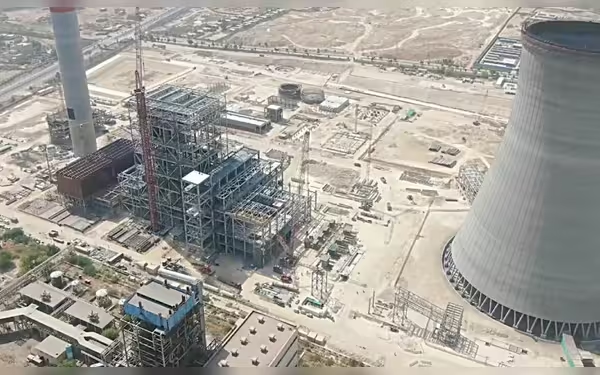Saturday, November 16, 2024 07:55 PM
Thar Lignite Transition Plan for Jamshoro Power Plant Faces Major Setback
- ADB refuses support for Thar lignite conversion.
- Legal covenants hinder 100% local coal usage.
- Environmental concerns raised over increased pollution.
 Image Credits: dawn
Image Credits: dawnThe plan to convert Jamshoro Power Plant to Thar lignite faces setbacks due to ADB's refusal and environmental concerns.
The ambitious plan by the Pakistani government to transition coal power plants from imported coal to 100% Thar lignite has encountered significant challenges. This initiative aimed to reduce reliance on foreign coal and promote local resources, but it has faced a major setback due to the Asian Development Bank's (ADB) refusal to support the conversion at the Jamshoro Power Plant Unit I. The ADB, being the largest creditor for this project, holds considerable influence over any structural changes that may be proposed.
According to an ADB official, the existing agreements stipulate a specific fuel mix of 80% imported sub-bituminous coal and only 20% local lignite. The bank has clearly stated, "No, we don’t support the conversion of the Jamshoro Power Plant to 100% local lignite coal." This statement underscores the bank's commitment to its original agreements and highlights the complexities involved in altering the fuel source.
An official from the energy ministry, who chose to remain anonymous, confirmed that converting the plant to utilize 100% Thar lignite would breach legal covenants established in the loan agreements. The Jamshoro project, which has a capacity of 1,320 megawatts, is still under construction, with its first unit nearing completion but not yet operational. The delays in commissioning are attributed to a shortage of foreign exchange for importing the necessary coal and the lack of infrastructure, such as a railway line to transport Thar coal to the plant.
The ADB has also pointed out that the proposed conversion does not align with its Safeguard Policy Statement. The Environmental Impact Assessment (EIA) and Environmental Management Plan (EMP) conducted for the current fuel mix would become invalid if the plant switched to 100% Thar lignite. This is crucial because lignite coal generally has a lower heating value and higher emissions compared to sub-bituminous coal, which could lead to increased air pollution, potentially exceeding national and international air quality standards.
Environmental activists have raised concerns about the implications of this conversion. They argue that the shift to local lignite could significantly increase pollution levels and exacerbate water scarcity issues in the region. Lignite requires more water for power generation, which could strain local water resources already under pressure.
The government hopes that transitioning five major coal-fired power plants, including Jamshoro, to local lignite will reduce electricity costs and save the country substantial amounts in energy imports. However, the challenges posed by the ADB's stance and the environmental implications of using Thar lignite cannot be overlooked.
While the intention behind the shift to Thar lignite is commendable, the hurdles presented by financial agreements and environmental concerns highlight the complexities of energy policy in Pakistan. As the government navigates these challenges, it must balance the need for energy independence with the responsibility to protect the environment and adhere to international agreements. The future of energy in Pakistan may depend on finding innovative solutions that satisfy both economic and ecological needs.













